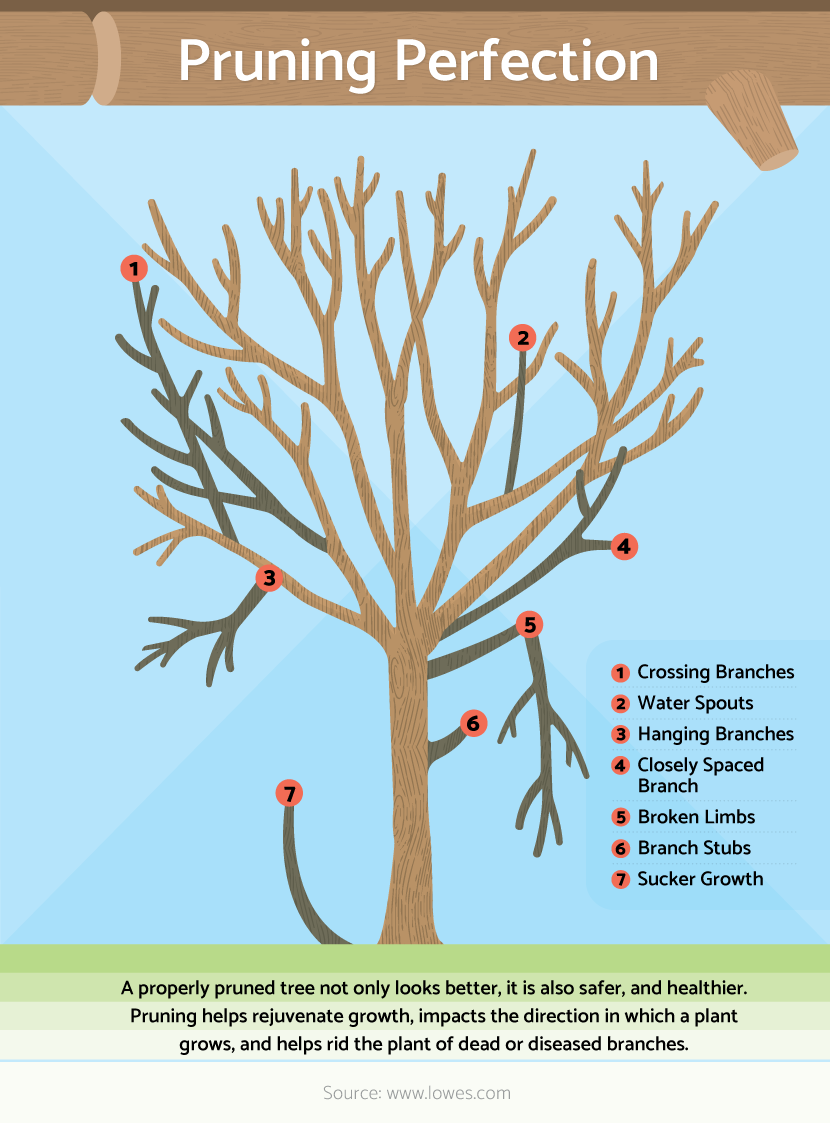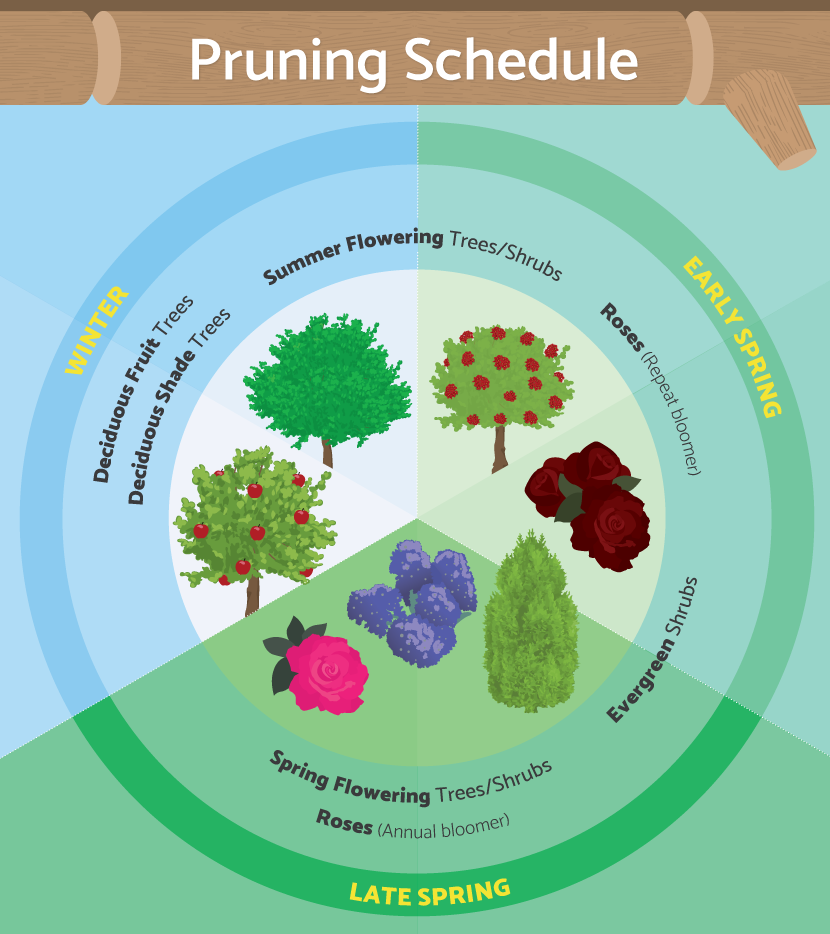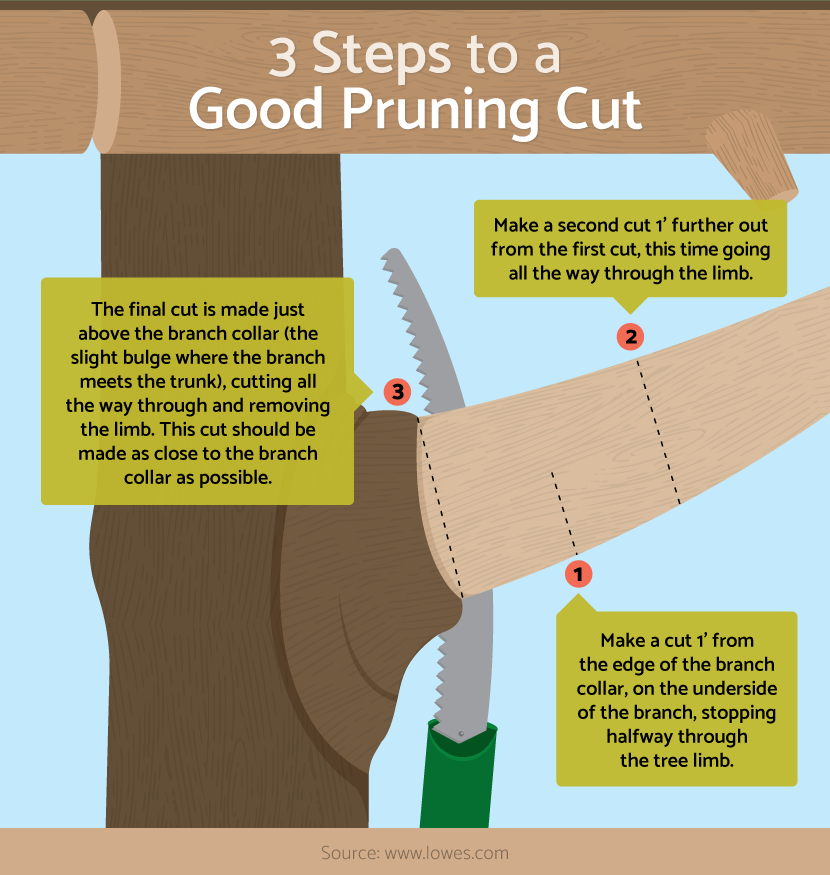Pruning Primer
Basic Steps for Pruning Trees and Shrubs
As a landscape designer, I often spend time talking my clients through the Do’s and Don’ts of pruning. There are few essential garden tasks that, when done incorrectly – like pruning – can literally ruin your garden. It’s amazing how misunderstood pruning is, so let’s start with the basics.
What is Pruning and Why is it Important?
Pruning is the intentional removal of certain parts of the plants – branches, buds, or even roots. Proper pruning enhances the overall health and appearance of nearly any landscape tree or shrub, while improper or unnecessary pruning can permanently harm or ruin the same plant. Now don’t let that scare you, since pruning – once it’s demystified – is really just a matter of common sense. Once you understand the “why,” then it’s much easier to make good decisions. The very last thing you want to do is grab your pruners and go to town on your trees or shrubs without having a good reason.
So let’s look at the four main reasons to prune:
- Prune to train the plant: plants that are trained to grow laterally against a vertical surface (espalier, fruit vines, etc.) or those that are pruned into a particular shape.
- Prune to maintain plant health: plants that have dead, diseased or unhealthy growth.
- Prune to improve the quality of the fruit, flowers or foliage.
- Prune to restrict the growth: plants that have a range of mature growth can be kept to a more manageable size.

If you aren’t trying to achieve one of those four goals above, then you don’t have a good enough reason to prune. When in doubt, it’s usually better to not prune than to do it incorrectly.
Which Plants Need Pruning?
While many plants will appreciate some trimming from time to time to maintain their shape or to encourage more bloom, when it comes to intentional pruning, we’re really talking about trees and shrubs. Many flowering perennials and ornamental grasses require an annual “cutting back” (typically in late fall or early winter), but it’s the trees and shrubs that need more particular attention paid to healthy and proper pruning.
It’s imperative to know what kind of plants you have so you can know when to prune them and how to prune them, so here’s a rundown of terms you will likely come across when reading up on pruning:
Spring-flowering trees & shrubs: Shrubs like lilac, rhododendron, and forsythia are those that produce flowers in the spring on the previous year’s growth.
Summer-flowering trees & shrubs: Plants like crape myrtle and butterfly bush produce flowers in the spring, but on new growth from the current season.
Roses (once-a-year bloomers): Climbing roses and old garden roses typically bloom only once per year, usually in the spring.
Roses (repeat bloomers): Roses like floribundas, grandifloras, hybrid teas, shrub roses, and miniature roses usually bloom off and on throughout the growing season.
Deciduous shade & fruit trees/shrubs: Deciduous trees/shrubs like oak, ash, peach, pear, and apple are those that drop their leaves during the late fall and winter – this is their normal cycle and is not considered unhealthy.
Evergreen shrubs & trees: Evergreens like holly, juniper, mahonia, cypress, and spruce keep their leaves all year long, even throughout the winter.
When to Prune
When to prune largely depends on the type of plant you have, so be sure you know what is in your garden. If you prune at the incorrect time, you can damage the plant or remove the plant’s ability to flower for the entire year. To be on the safe side, always consult the County Extension office for the best times to prune landscape plants in your area – they will likely have a handout, a guide, or a link to give you.

As you can see from the chart above, the worst time to prune nearly anything is in late summer or fall. Why is this? Because proper pruning promotes growth, and we don’t want to encourage plants to put out new growth when we typically expect sudden changes in temperature. That tender new growth is no match for freezing or even chilly temperatures, so unless you have a limb that has fallen and needs immediate removal, wait until the recommended time.
How to Prune
How to prune depends on what you are pruning and what you are hoping to accomplish – for example, pruning a hedge requires a very different technique than pruning an espalier lemon tree. Remember at the beginning of this article we talked about why pruning is important? Refer to that first – know what plant you have, what your goal is, and then common sense will kick in. But just to be sure your common sense is fueled with some solid facts, here are some easy-to-remember general pruning steps:
- Remove all dead, diseased, or damaged stems and branches.
- Remove suckers and sprouts (vertical growth that shoots up from the bottom of the tree).
- Remove a limb that crosses over and touches another (invitation for disease).
- Remove growth to slightly reduce the size of the plant. One caveat: if you routinely need to prune a shrub down to half its size, this is an indicator that you have the plant in the wrong place. Better to remove it and/or transplant to another part of your garden where its size does not create a problem.
- Gently prune for shape. For this step, I like to stand back and look at the overall shape, removing any odd-looking growth that keeps the plant from looking balanced and attractive.
- Remove a branch down to the point of origin, never making a cut in the middle of the branch or stem.

For information on very specific pruning steps for a particular plant, consult your County Extension office or simply run a quick internet search. Espalier pruning, hedge pruning, and rose pruning have completely different steps, and use different tools.
The Right Tool for the Job
The success of your pruning also depends on using the right tool for the job – use the wrong tool or one that is too small for the cut you want to make, and you run a high risk of making a poor cut, harming the plant, or ruining your equipment. There is a wide range of pruning tools and, while some choices boil down to personal preference, the average gardener can get away with just a few well-chosen ones.
Most pruning jobs can be accomplished easily by the average homeowner – shrub trimming, occasional limb pruning, or plant shaping, for example. If you have a project that is very large or potentially dangerous, though, it’s best to hire professionals. Examples of this are very large trees with heavy limbs, trees that have disease issues, or shrubs/trees that require exacting pruning to maintain a specific shape or form.

Pruning is not a difficult garden chore, even though it’s a very important one. If you remember the Golden Rule – Prune with a Reason – then nine times out of ten you will be making a good choice for your plants and gardens, and your shrubs and trees will thank you with years of healthy growth.
Embed the article on your site

